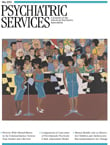The Criminal Brain: Understanding Biological Theories of Crime
A picture can paint a thousand words. A CT scan or an MRI can lead a jury in a criminal trial to a conclusion of brain dysfunction and exculpability, even if the scientific linkages between a particular brain defect and specific criminal behavior do not exist. But is there a way to distinguish the brain of a criminal from that of someone who has never committed a crime? Does the brain of a pickpocket differ from the brain of a serial killer? How has society responded to views that inferior brain function leads to criminality? These are just a few of the matters tackled in The Criminal Brain. The book spans the ages of criminal theories that have examined brain structure, function, and heredity to try to better understand criminal conduct from a biological perspective.
The book is worth reading, although the writing is cumbersome and redundant at times. Also, several of the author's descriptions seem clinically uninformed. For example, her description that early 19th century debates about moral insanity exemplified psychiatry as "vying for professional control over criminality" made the book less appealing to this clinician. Nevertheless, the totality of the work covers a breadth of information and a perspective that together portray a unique collection of ideas that advance one's thinking on theories of criminality and science. Traveling across time and promulgated theories, the reader finds a patchwork of ideological movements that helps put criminal theory into a perspective not covered in classic textbooks. In addition, the author has effectively sprinkled throughout the text compelling historical drawings, renditions, and photographs to highlight points she has made in each chapter.
There are several chapters that are particularly compelling for their historical accounts, and the thread of biological theories of crime weaves through them. For example, chapter 3 deals with the field of phrenology, the popular 19th century notion of being able to understand character and conduct by examining the contours of the skull. The author describes the complex notion that in its heyday a phrenological examination of the skull could help determine the degree of one's criminal responsibility. Chapter 4 highlights the work of Cesare Lombroso, an Italian psychiatrist and early anthropologist. Although he is criticized for his dogmatic theories and poorly designed "scientific study" of criminal behavior, he also is given credit throughout the book for his significant influence on criminal theory. Some of Dr. Lombroso's science is highlighted, such as a figure based on data he collected that shows the cranial volume of male criminals and noncriminal men; the data are also noted to lack the proper controls for drawing appropriate conclusions.
Chapter 6, titled "Stupidity Theories," begins with an accounting of the infamous case of Buck v. Bell, a 1927 U.S. Supreme Court case in which Justice Oliver Wendell Holmes Jr. wrote an opinion that forced a young woman who had been committed involuntarily for "feeblemindedness" to be sterilized, for fear that if not done, society would be faced with having to mete out punishment to criminal offspring over future generations. The notion of eugenic criminology that was part of the Buck case is further explained with often frightening examples of attempts to utilize science, which ultimately proves false, in the name of a perceived "societal good." Regarding eugenics and racial hygiene, Ms. Rafter goes further to describe the science and law that culminated in the policies and practice of Nazi Germany. Ms. Rafter refers to this as "criminology's darkest hour."
Moving from science and theory to interplay with politics, Ms. Rafter is able to pull together the past, the present, and her thoughts regarding the future of biocriminal theory. She gives weight to the recent scientific work examining psychopathy and crime. She expounds and offers her view of the need to better understand that nature and nurture work together to yield an individual, whether criminal or not. In this way, she sees hope for modern genetics to be able to assist with social change for the better. After reading the book, one has gained a sense of the roads that criminal theory has taken. One also has a better understanding and perhaps a cautious optimism about the importance of scientific advances after considering this careful recollection of the ways in which science can go awry.
The reviewer reports no competing interests.



